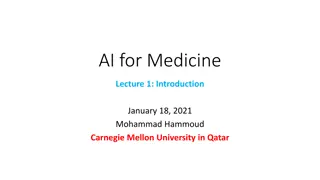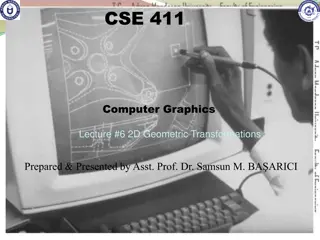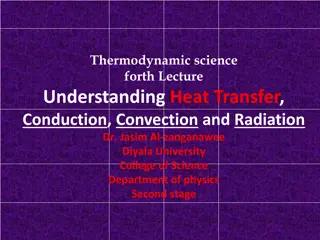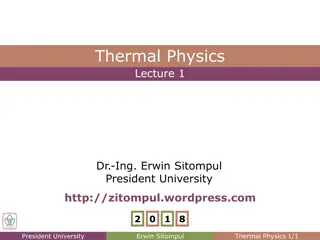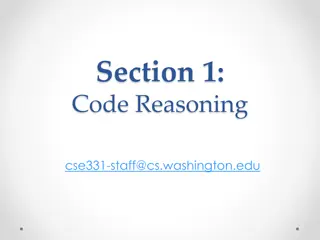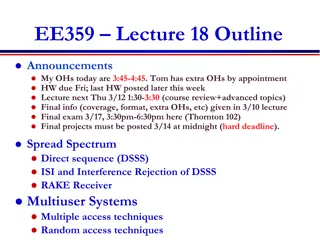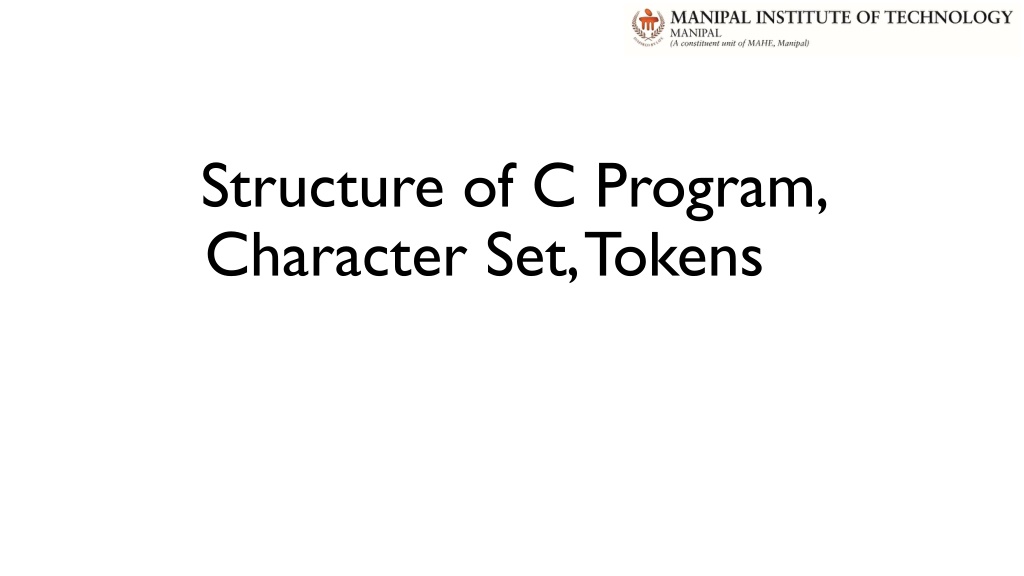
C Program Structure: Character Set and Tokens
Learn about the structure of C programs, including the character set, tokens, and data types. Understand how characters, symbols, keywords, and identifiers are used in C programming. Explore examples of simple C programs and input methods like scanf for user interaction.
Download Presentation

Please find below an Image/Link to download the presentation.
The content on the website is provided AS IS for your information and personal use only. It may not be sold, licensed, or shared on other websites without obtaining consent from the author. Download presentation by click this link. If you encounter any issues during the download, it is possible that the publisher has removed the file from their server.
E N D
Presentation Transcript
Structure of C Program, Character Set, Tokens
C Character set Letters a , b , c , .. z Or A , B , C , . Z Character set is a set of characters language recognize. valid that a can Digits 0, 1, 2, 9 C character set consists of letters, digits, characters, spaces. Special characters ;, ?, >, <, &,{, }, [, ] special white White spaces New line (\n), Tab(\t), Vertical Tab(\v) etc. 2
C Tokens C Tokens Tokens A token is a group of characters logically together. The programmer writes a program by using tokens. C uses the following types of tokens. Special Symbols Keywords Identifiers Operators Strings Constants that belong Break Variable + hello 123 ; Int Constant * 123 21.3 ? Function name float % s A > Array name g & hello { 3
Structure of C program #incude<stdio.h> void main() { printf( I love programming\n ); /*new line*/ printf( You can learn it easily ); /*add comment*/ printf( easily\n ); } 9
Input: Scanf() #incude<stdio.h> void main() { int num; printf( Enter a number = ); Scanf() is used to obtain the value from the user It is included in stdio.h scanf( %d , &num); Eg: scanf( %d , &integer1); printf( The number is = %d , num); } 10
Data Types and its Storage Requirements and its Range Format Specifier %c %c %d %u %h %hu %ld %lu %f %lf %Lf 11
Character Group Meaning %c Read a single character %d Read a decimal integer %f Read a floating point number %g Read a short int number %h Read a short int number 12
C Program Essentials: Format Specifiers Format specifier Description %d or %i It is used to print the signed integer value where signed integer means that the variable can hold both positive and negative values. %u It is used to print the unsigned integer value where the unsigned integer means that the variable can hold only positive value. %o It is used to print the octal unsigned integer where octal integer value always starts with a 0 value. %x It is used to print the hexadecimal unsigned integer where the hexadecimal integer value always starts with a 0x value. In this, alphabetical characters are printed in small letters such as a, b, c, etc. %X It is used to print the hexadecimal unsigned integer, but %X prints the alphabetical characters in uppercase such as A, B, C, etc. %f It is used for printing the decimal floating-point values. By default, it prints the 6 values after '.'. 13
C Program Essentials: Format Specifiers Format specifier Description %e or %E It is used for scientific notation. It is also known as Mantissa or Exponent. %g It is used to print the decimal floating-point values, and it uses the fixed precision, i.e., the value after the decimal in input would be exactly the same as the value in the output. %p It is used to print the address in a hexadecimal form. %c It is used to print the unsigned character. %s It is used to print the strings. %ld It is used to print the long-signed integer value. 14
Output: Printf() C provides the printf() to display the data on the monitor. It is included in stdio.h Examples are: Printf( programming is an art ; Printf( %d , number); Printf( %f%f , p,q); 15
#include <stdio.h> int main( void ) { int sum; /* variable in which sum will be stored */ int integer1; /* first number to be input by user */ int integer2; /* second number to be input by user */ printf( "Enter first integer\n" ); scanf( "%d", &integer1 ); /* read an integer */ printf( "Enter second integer\n" ); scanf( "%d", &integer2 ); /* read an integer */ sum = integer1 + integer2; /* assign total to sum */ printf( "Sum is %d\n", sum ); /* print sum */ return 0; /* indicate that program ended successfully */ } /* end function main */ Adding two integers 16
Syntax and Logical errors Syntax errors: violation of programming language rules (grammar). Detected by the compiler Eg: printf ( hello world ) // semicolon missing Logical errors: errors in meaning: Programs are syntactically correct but don t produce the expected output User observes output of running program 17
C Compiler: For Window, you need to install MinGW for GCC or you can use Turbo C compiler. The most frequently used and free available compiler is the GNU C/C++ compiler for Linux For MAC, the easiest way to obtain GCC is to download the Xcode development environment from Apple's web site and follow the simple installation instructions. What to do when a C program produces different results in two different compilers? Your program must follow C standard i.e. ISO/IEC 9899:2011 (also known as C11) 18
Compilation Process The compilation is a process of converting the source code into object code. The compilation process can be divided into four steps, i.e., Pre-processing, Compiling, Assembling, and Linking. The extension of the object file in DOS is '.obj,' and in UNIX, the extension is 'o'. 19
Thank You!! 20
A program for Finding an Even and Odd #include<stdio.h> main() { int a,x; printf("Enter a number\n"); scanf("%d",&a); x=a%2; if(x==0) printf("Number a=%d is even\n",a); else printf("Number a=%d is odd\n",a); } 21
Swap of Two Numbers, Using Two Variables #include<stdio.h> main() { int a=5, b=6; printf("Swap of Numbers\n"); a=a+b; printf("a=%d\n",a); b=a-b; printf("b=%d\n",b); a=a-b; printf("a=%d\n",a); ///b=c; printf("Final a=%d and b=%d",a,b); } 22
Interest Calculation Program #include<stdio.h> #define PERIOD 10 #define PRINCIPAL 5000.00 void main() { int year; float amount, value, Inrate; amount=PRINCIPAL; inrate=0.11; year=0; while(year<=PERIOD) { printf("year=%2d and amount=%8.2f\n",year, amount); value=amount=amount+inrate*amount; year=year+1; amount=value; } } 23
Subroutine Call Program #include<stdio.h> main() { int a, b, c; a=5; b=6; c=mul(a,b); printf("multplcaton of a=%d and b=%d is = %d",a,b,c); } int mul(int x,int y) { int p; { p=x*y; return p; } } 24
Compilation Process Example 25




